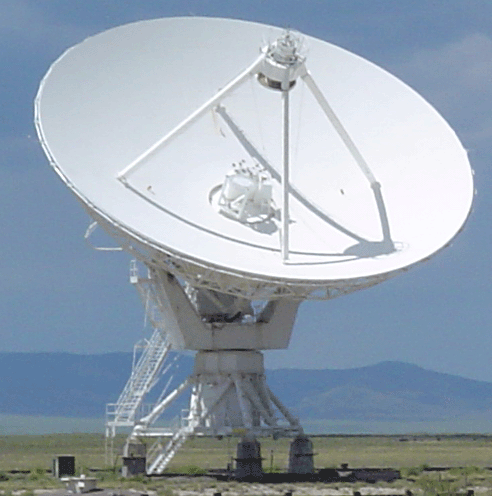Is there anybody out there?
I once travelled with my very close friend, Mynetta Murray, throughout much of the southwest. One stop on our trip was the National Radio Astronomy Observatory Very Large Array. Many people have seen this in movies, such as Contact, Space Odyssey 2010, and Arrival, but most don't really understand what it's about. To really grasp the concept there is some math involved, but to keep it brief imagine roughly how many blades of grass exist in the lawn of an average home (I grew up in Upstate New York where people do a lot of grass mowing). Now imagine how many lawns there are throughout the world and how many blades of grass that is, don't forget about forests, golf courses and wide-open rolling fields. Now imagine instead of blades of grass, this is the number of stars in a single galaxy like our own Milky Way. Okay, now imagine there are more galaxies, with all those stars, than there are blades of grass on Earth --seems infinite! And, every single galaxy or nebulae has millions or billions of stars in it!We
have already found planets orbiting stars in other solar systems of our
galaxy. Based on the number of stars and galaxies/nebulae of stars, it
is entirely reasonable there is some form of life, intelligent life,
out there someplace. Not only is this probable, but it's also
possible such a culture has evolved the technology of radio and
electronics. Understanding radio waves travel at the speed of
light through space without impedence, our own radio and television
signals from Earth have already reached other stars. Ergo, such
communication from a far off planet may one day reach us. In
fact, it may already be hitting us but we just haven't identified it
yet from among all our own chatter! That's what a radio telescope
is used for.
The
VLA is a group of "listening" dishes
arranged to function as a single radio telescope, as opposed to
optical/visual telescopes like those seen in most observatories with a
protective rotating dome. The space-based Hubble telescope is
also
optical. The VLA dishes collectively listen to a single point in
the sky for a radio signal that is comprised of something other than
background noise, such as radiation form the Sun or localized chatter
like airplane and satellite signals and radio communications related to
activites on Earth. Once a signal is found that yields a
recognizable pattern of some form, it is analyzed to see if the pattern
repeats at regular intervals, say as an SOS call would do. If it
does, then other radio telescope observatories on Earth are asked
to point at the same spot in the sky to see if they too can "hear" the
signal. If they can, and some more math tells us it's farther
away then the Internal Space Station's orbit, then ... we may have
found ET!
Arecibo Observatory
So how tough can this be, right? Well, unfortunately there are three big challenges with all this. First, that point in the sky is extremely small because it is so far away --imagine trying to hear something as small as an ant ... walking around on the moon! Next, our own Earth-based chatter is so prolific it's hard to isolate an individual signal --ergo trying to hear that ant walking on the moon while attending a Superbowl half-time show! Lastly, there are so many signals and so many possible patterns to sort through, it takes an incredible amount of computer processing power to figure it all out. Using our ant and Superbowl analogy (suspension of disbelief addressing the fact you need air to create sound), imagine sitting there with the task of listening to each and every person in the stadium yelling, talking, and don't forget about the music, fireworks, even camera clicks need to be identified and either discarded or inspected more thoroughly beofre you can listen to only the ant's footsteps --not an easy job!

Arecibo Observatory in the mountains of Puerto Rico
As you can tell, checking each minute point of our vast sky is going to take a long while. This is what the VLA is doing for us! :)
But you can help too. Click here to download a SETI (search for extra-terrestrial intelligence) tool and help find aliens out there talking to us. It uses idle time when your computer's screen-saver is operating to process data collected by SETI at Mt. Arecibo.
